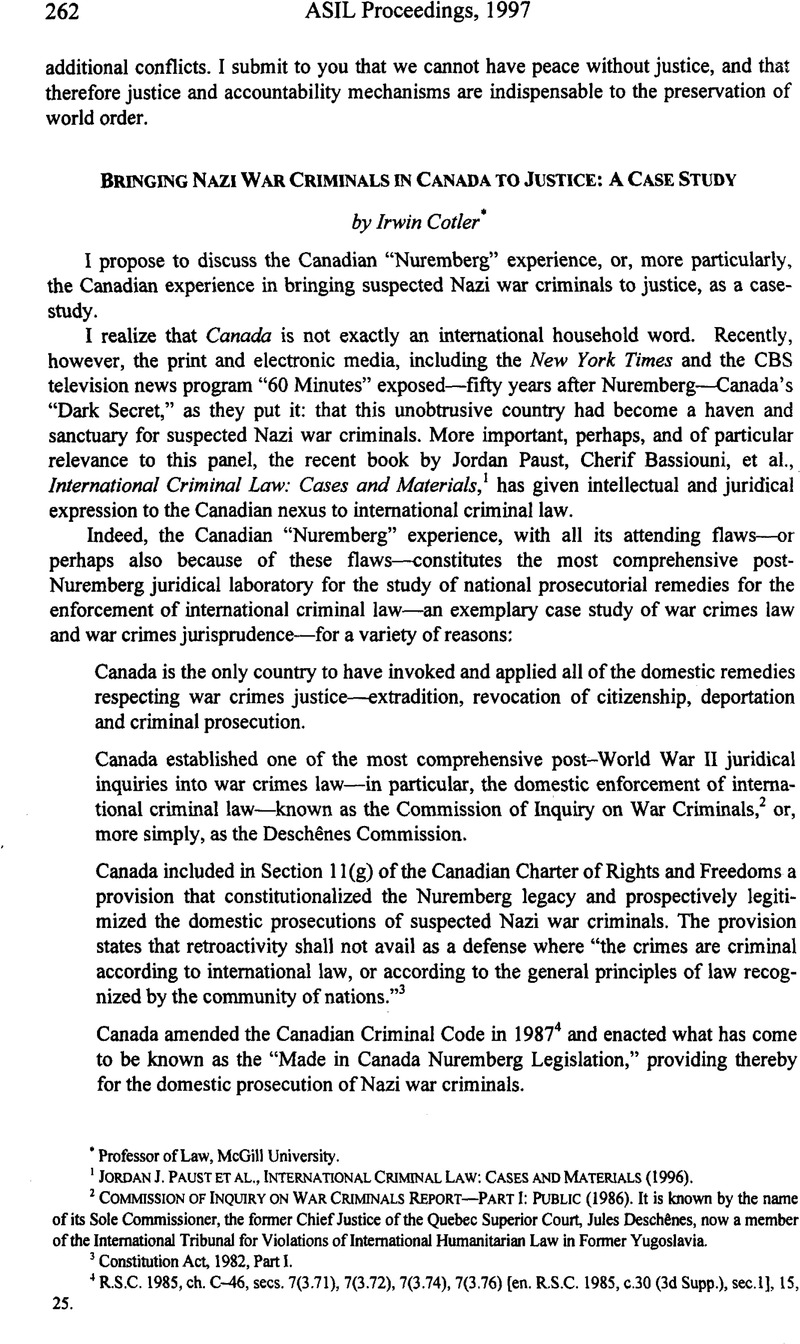Published online by Cambridge University Press: 28 February 2017

1 Ultimately, the Jews of Bordeaux captured by French or German authorities would, for the most part, be sent by train from the Mérignac prison camp in the south of France to a larger prison camp, Drancy, in the north, and finally to Auschwitz, where they would be exterminated.
2 Information regarding the Slitinsky case as well as the other cases involved in the Papon case can be found in the opinion of the Court of Appeals of Bordeaux, Indicting Chamber, Decision of Sept. 18, 1996. CA Bordeaux, Sept. 18, 1996 (unpublished) [hereinafter Papon I].
3 Wexler, Leila Sadat, Reflections on the Trial of Paul Touvierfor Crimes against Humanity in France, 20 J. L. & Soc. Inquiry 191, 198 (1995)CrossRefGoogle Scholar.
4 Journal officiel de la République Française, Dec. 29, 1964.
5 Wexler, Leila Sadat, The Interpretation of the Nuremberg Principles by the French Court of Cassation: From Touvier to Barbie and Back Again, 32 Colum. J. Transnat’l L. 289 (1994)Google Scholar.
6 See infra note 12.
7 Osiel, Mark J., Ever Again: Legal Remembrance of Administrative Massacre, 144 U. Pa. L. Rev. 463 (1995)CrossRefGoogle Scholar. The term “administrative massacre” is Professor Osiel’s.
8 Papon I, supra note 2, at 133.
9 Papon I, supra note 2, at 140. In affirming the Indicting Chamber, the Cour de Cassation also held that, contrary to the arguments of Papon’s attorneys, Papon did not himself need to adhere to the ideological policy of the Nazis in order to be guilty of complicity. It sufficed that he accepted the post in Bordeaux knowing that the bureau of Jewish affairs would be under his authority and that he committed acts, as part of his job, that furthered die Nazis’ plans for the extermination of the Jews.
10 The 1964 law was replaced in 1992 by a French statute condemning crimes against humanity which largely codifies the case law, although it does remove the requirement that there be a nexus between the perpetrator and a European Axis power. N.C. Pénal art. 212-1.
11 Article 55 of the French Constitution provides for the superiority of international treaties over domestic legislation.
12 Although the court applied a definition of crimes against humanity that was distorted by previous case law, its treatment of the intent issue and Papon’s defenses are positive developments that may ultimately be very useful contributions to an understanding and elaboration of the elements of the crime against humanity in international law.
13 Indeed, French interpretation of Article 6(c) is so distant from its international meaning as to arguably remove it from the province of international law. The French courts assimilated the crimes to “ordinary crimes”; added the requirement that the crimes be “systematic” and in furtherance of a state policy that was a “hegemonic political ideology”; required the existence of a “common plan” (a misreading of the conspiracy language of Article 6(c)); and restricted application of Article 6(c) to those working “in the interests of the European Axis countries, ” which was certainly a limitation on the International Military Tribunal’s own jurisdiction. See Wexler, Nuremberg Principles, supra note 5, at 355-63.